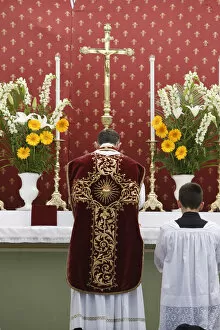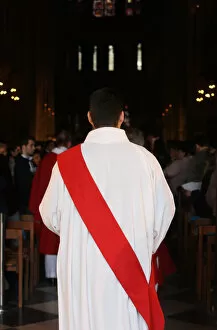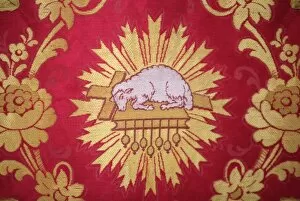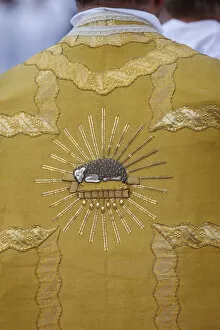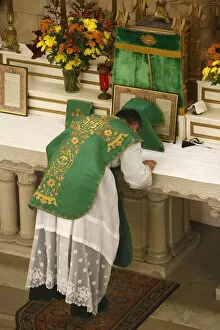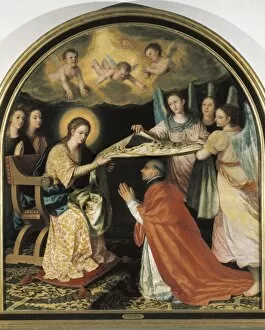Chasuble Collection (#4)
The chasuble, a garment with rich historical and cultural significance, has been woven into the fabric of various aspects of human life
For sale as Licensed Images
Choose your image, Select your licence and Download the media
The chasuble, a garment with rich historical and cultural significance, has been woven into the fabric of various aspects of human life. From its association with religious figures like Saint Antoninus of Pamiers to its appearance in theatrical plays such as Wilde's "The Importance of Being Earnest, " this ornate vestment holds a captivating allure. Originating from France during the 17th and 18th centuries, lace weaving and embroidery techniques were employed to create these exquisite textiles. The intricate craftsmanship showcased on the Rubens Chasuble exemplifies the mastery involved in their creation. Every detail meticulously crafted by unknown artisans who left behind a legacy that transcends time. Even royalty embraced the elegance of the chasuble. Louis the Pious, King of the Franks and co-emperor with his father Charlemagne, donned this regal attire during his reign from 778 to 840. The tomb of Abbot Ingon at Abbey Saint-Germain-des-Pres in Paris serves as a testament to its enduring presence throughout history. In addition to its religious significance, chasubles also found their way onto theater stages. Whether it be through symbolic representation or costume design choices, they added an air of grandeur and authenticity to performances like "The Importance of Being Earnest. " Panel pieces dating back to 1725/75 offer glimpses into French artistry surrounding these garments. Possibly used as chasuble backs, these panels showcase elaborate designs that speak volumes about their creators' skill and dedication. From Christian missionaries like Saint Antoninus spreading their faith while wearing this sacred garb to Frankish priests adorned in chasubles during rituals in the 9th century - each thread weaved into every inch carries stories untold yet preserved for generations. As we admire these timeless creations today, let us appreciate not only their aesthetic beauty but also recognize them as artifacts connecting us with our past - a tangible link to the rich tapestry of human history.


